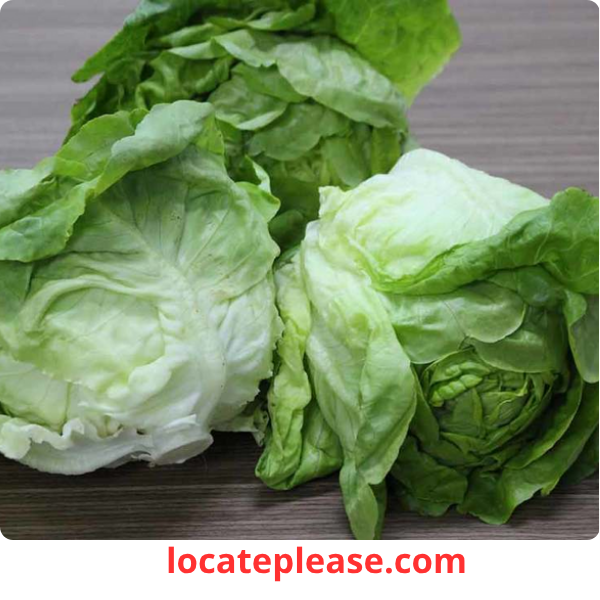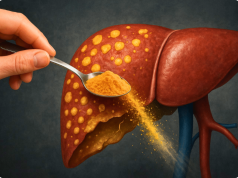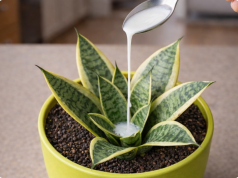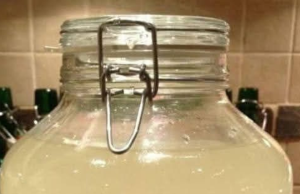When we think about foodborne illness, our minds often jump to undercooked meat, raw eggs, or unpasteurized milk. But there’s a lesser-known danger lurking in your produce drawer: parasites on vegetables .
Yes — some common vegetables can harbor microscopic parasites that may cause serious gastrointestinal issues, including diarrhea, nausea, cramping, and long-term health complications if left untreated. These organisms are typically picked up through contaminated soil, irrigation water, or improper handling during growing or processing.
While this doesn’t mean you should stop eating vegetables (absolutely not!), it does mean you should be aware of which ones are more prone to contamination — and how to properly clean and prepare them.
Here are 8 vegetables known to carry parasites , along with expert tips to keep your meals safe and healthy.
1. Lettuce (and Leafy Greens)
Why it’s risky:
Lettuce, spinach, kale, and other leafy greens have large surface areas and crevices where dirt, water, and tiny parasites like Giardia and Cryptosporidium can hide. These greens are often eaten raw, increasing the risk of infection.
Common parasites:
- Giardia lamblia
- Cryptosporidium parvum
How to reduce risk:
- Rinse each leaf thoroughly under running water.
- Soak in a vinegar or produce-wash solution (1 part vinegar to 3 parts water) for 5–10 minutes.
- Dry with a clean towel or salad spinner to reduce moisture where bacteria can grow.
📌 Tip: Pre-washed “ready-to-eat” bags aren’t always foolproof — consider giving them an extra rinse at home.
2. Cucumbers
Why it’s risky:
Cucumbers grow close to the ground and are often irrigated with potentially contaminated water. Their waxy skin can trap parasites like cyclospora , especially in imported produce.
Common parasite:
- Cyclospora cayetanensis — causes prolonged diarrhea outbreaks linked to imported cucumbers and herbs.
How to reduce risk:
- Scrub the skin with a vegetable brush under running water.
- Peel if consuming raw, especially if immune-compromised.
- Avoid cross-contamination with raw meat on cutting boards.
3. Celery
Why it’s risky:
Celery’s ridged stalks make it difficult to clean thoroughly. It has been linked to multiple outbreaks of E. coli and cyclospora due to contaminated irrigation water.
Common contaminants:
- Cyclospora
- Listeria (bacterial, but often co-occurs)
How to reduce risk:
- Wash each rib individually, using a brush to get into grooves.
- Trim ends and remove outer strings carefully.
- Store in a sealed container to avoid recontamination.
4. Radishes
Why it’s risky:
Radishes grow underground and come into direct contact with soil that may contain animal feces or contaminated water — prime conditions for parasites like Entamoeba histolytica .
Common parasite:
- Entamoeba histolytica — causes amoebic dysentery, with severe stomach pain and bloody diarrhea.
How to reduce risk:
- Scrub well under running water.
- Peel before eating raw.
- Cook when possible, especially in high-risk regions.
5. Green Onions (Scallions)
Why it’s risky:
Frequently served raw in salsas, salads, and Asian dishes, green onions have been tied to several international parasite outbreaks, particularly from imported batches.
Common parasite:
- Cyclospora — responsible for multi-state foodborne illness outbreaks.
How to reduce risk:
- Cut off root ends and separate layers while washing.
- Soak in saltwater or vinegar solution for 10 minutes.
- Consider lightly blanching for use in cooked dishes.
6. Tomatoes
Why it’s risky:
Though technically a fruit, tomatoes are used as vegetables and are commonly eaten raw. Their porous skin absorbs water easily — and if that water is contaminated, so is your tomato.
Common parasite:
- Toxoplasma gondii — a dangerous parasite especially harmful to pregnant women and those with weak immune systems.
How to reduce risk:
- Wash under running water (not soaked).
- Use a produce brush gently on firm varieties.
- Always dry before storing.
⚠️ Note: Toxoplasma is often found in cat feces — avoid gardening without gloves if you have outdoor cats.
7. Carrots
Why it’s risky:
Grown in soil and often consumed raw (in juices, salads, snacks), carrots can carry parasites from manure-based fertilizers or dirty wash water.
Common parasites:
- Giardia
- Ascaris lumbricoides (a type of roundworm)
How to reduce risk:
- Peel before eating raw.
- Scrub thoroughly even if peeling.
- Buy organic or locally grown when possible to ensure better farming practices.
8. Bell Peppers
Why it’s risky:
Their textured skin and hollow interior can trap contaminants. Imported bell peppers have been linked to cyclospora outbreaks.
Common parasite:
- Cyclospora cayetanensis
How to reduce risk:
- Wash under running water and scrub gently.
- Remove seeds and inner membranes carefully.
- Blanch or cook in high-risk situations.
General Tips to Keep Your Produce Safe
✅ Always wash hands before handling vegetables.
✅ Use clean utensils and cutting boards — never reuse after cutting raw meat.
✅ Wash produce just before eating — washing too early can promote mold.
✅ Use running water — not standing water — to rinse off dirt and microbes.
✅ Consider a produce wash or DIY soak:
– 1 part white vinegar to 3 parts water
– Or 1 tsp baking soda per 2 cups water
✅ Peel when appropriate , especially for root vegetables.
✅ Cook when possible — heat kills most parasites.
✅ Store properly — keep veggies dry and refrigerated to slow pathogen growth.
Who’s Most at Risk?
Certain groups should take extra precautions:
- Pregnant women (Toxoplasma can harm fetuses)
- Elderly individuals
- Young children
- Anyone with weakened immunity (e.g., cancer patients, organ transplant recipients)
For these individuals, cooking vegetables is often the safest choice.
Final Thoughts: Don’t Fear Veggies — Just Handle Them Wisely
Vegetables are essential for good health. The goal isn’t to scare you away from fresh produce — it’s to empower you with knowledge.
By understanding which vegetables are more likely to carry parasites and taking simple steps to clean and prepare them safely, you can enjoy all the benefits of a plant-rich diet without the risks.
So go ahead — eat your greens. Just make sure you wash, scrub, peel, or cook them first.










